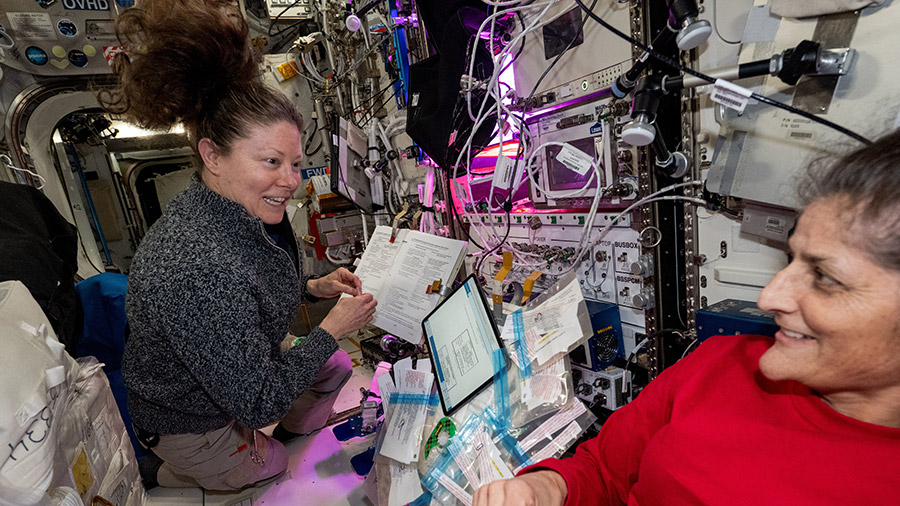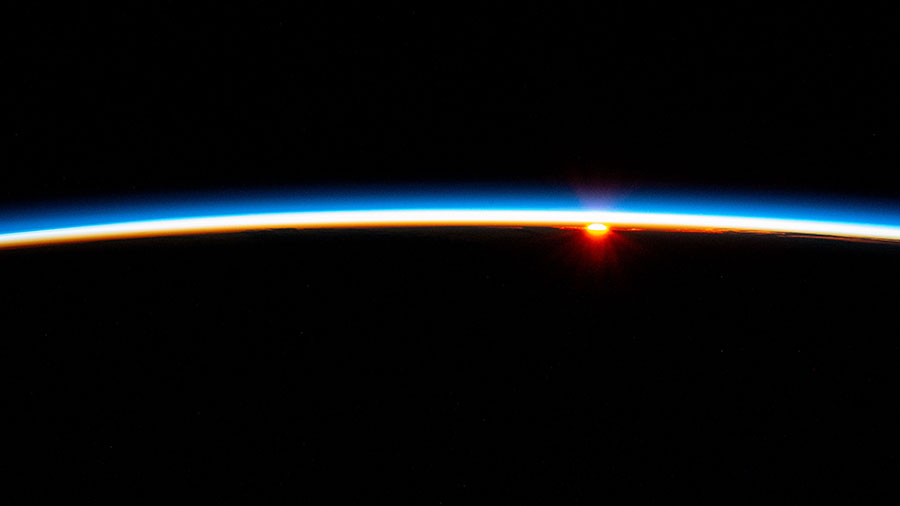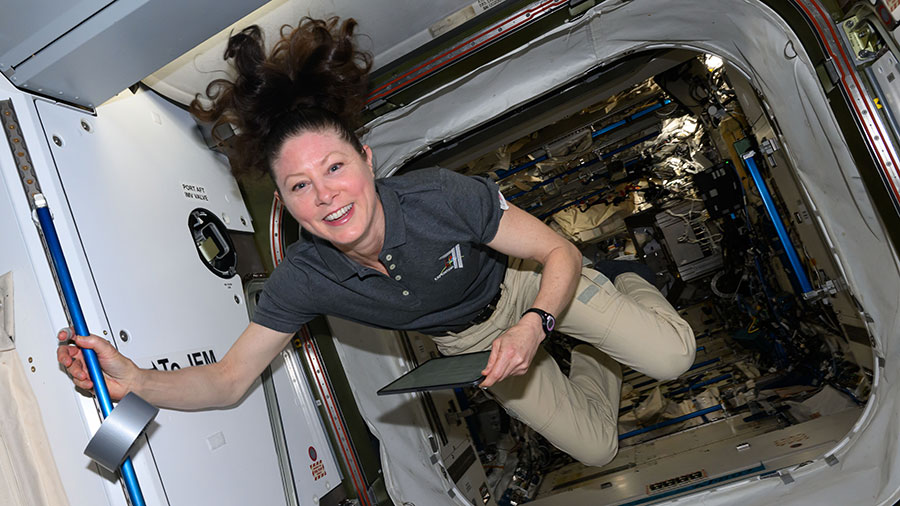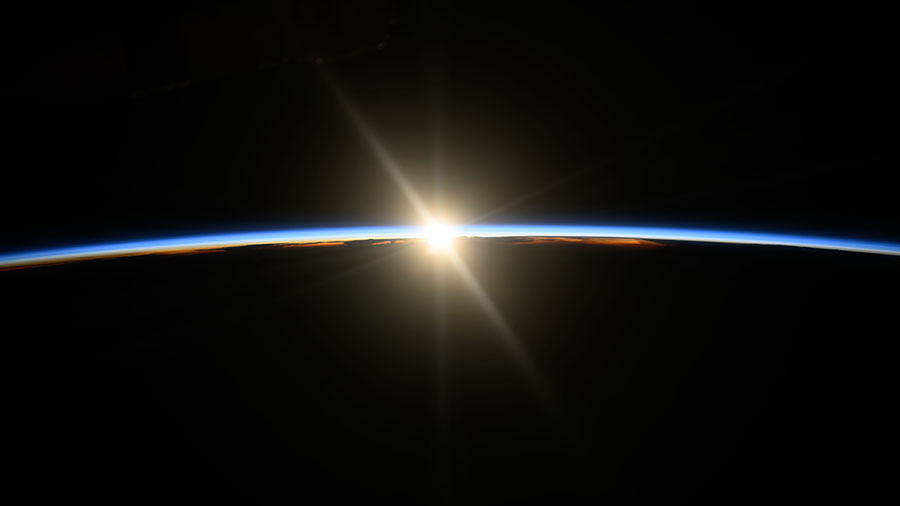
Space botany and combustion physics wrapped up the research schedule aboard the International Space Station on Friday. The orbital residents also finalized life support maintenance work and conducted eye exams at the end of the week.
NASA astronaut Jeanette Epps continued her weeklong plant research activities inside Kibo’s Advanced Plant Habitat. She began checking carbon dioxide bottles inside the space botany habitat installed in an EXPRESS rack. Next, Epps refilled a water reservoir inside the plant habitat for systems testing.
NASA astronaut Tracy C. Dyson began her day in the Kibo laboratory module swapping out sample hardware inside the Solid Combustion Experiment Module that observes how flames spread over solid fuels. She also joined Roscosmos cosmonauts Oleg Kononenko and Nikolai Chub checking the seats inside the Soyuz MS-25 crew ship the trio will ride back to Earth in late September.
The NanoRacks Bishop airlock has been robotically reattached to the Tranquility module following several days of science transfers. The Canadarm2 robotic arm extracted radio frequency experiment hardware from Bishop earlier this week and then installed it on the Columbus laboratory module’s Bartolomeo external science platform. Canadarm2 returned and attached Bishop to Tranquility where NASA Flight Engineers Matthew Dominick and Mike Barratt reconfigured and outfitted the science and cargo airlock for internal activities.
Dominick earlier joined Dyson in Columbus as she scanned his eyes using the Ultrasound 2 biomedical device. Dyson was imaging Dominick’s cornea, lens, and optic nerve with real time assistance from doctors on the ground studying how living long-term in weightlessness affects crew vision.
NASA astronauts Butch Wilmore and Suni Williams completed several days of life support work that began on Tuesday when the duo removed the carbon dioxide removal assembly (CDRA) from Tranquility’s Air Revitalization System rack. The pair have been cleaning components inside the CDRA all week wrapping up that work at the end of Friday. The CDRA will be reinstalled on Monday and returned to service.
The International Space Station crew and ground teams have completed the configuration of the SpaceX Dragon spacecraft supporting Crew-8 to now serve as the emergency return spacecraft for NASA astronauts Butch Wilmore and Suni Williams, if needed, until NASA’s SpaceX Crew-9 mission arrives following launch no earlier than Sept. 24. Station emergency procedures and crew trainings have been updated to reflect this change. The Starliner spacecraft is targeting an uncrewed undocking on Friday, Sept. 6, and landing on Saturday, Sept. 7, pending weather and operational readiness.
Station Commander Kononenko and Flight Engineer Chub participated in their own set of eye exams at the end of Friday. The duo from Roscosmos took turns in Columbus scanning each other’s eyes with the Ultrasound 2 downlinking real time imagery of their cornea, lens, and optic nerve. Earlier, the duo began collecting cargo for return to Earth aboard the Soyuz MS-25 and serviced an oxygen generator in the Zvezda service module. Flight Engineer Alexander Grebenkin refilled coolant inside Zvezda’s air conditioning system then collected atmospheric measurements in the 24-year-old module for analysis.
Learn more about station activities by following the space station blog, @space_station and @ISS_Research on X, as well as the ISS Facebook and ISS Instagram accounts.
Get weekly video highlights at: https://roundupreads.jsc.nasa.gov/videoupdate/
Get the latest from NASA delivered every week. Subscribe here: www.nasa.gov/subscribe









